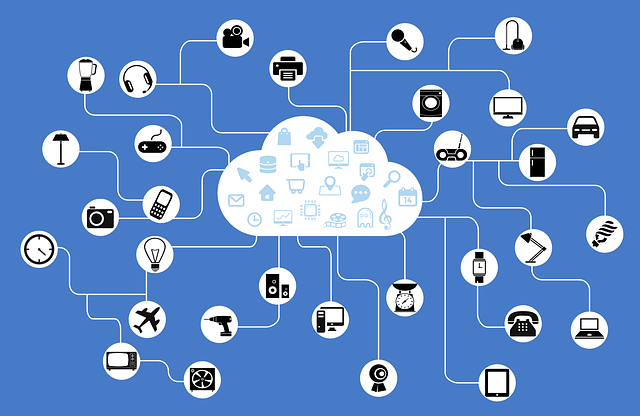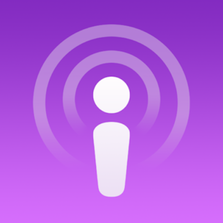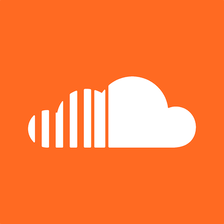|
Charles Bell, guest writer Earlier this year when reports were coming out of CES 2015, Forbes wrote about Apple's emergence as an IoT competitor. For those who may not be as familiar with the term just yet, the IoT refers to the so-called "Internet of Things," which is essentially the automatic connectivity of different devices for the sake of safety, security, convenience, and/or efficiency. The simplest example of this implementation that the average tech user is increasingly familiar with is fitness tracking, whereby a smart watch or phone can automatically track your exercise data and plug it into a computer program that helps you to analyze your fitness. But the IoT's potential goes much further than personal fitness tracking, and now stretches across a range of industries. Just how far into the whole concept Apple will get remains to be seen, but the aforementioned Forbes article was referring mostly to the in-home IoT, where Google and Apple are laying the foundation for a fierce competition. In-home IoT can mean anything from a smart thermostat to control over home security, and Apple appears to be involved with all of it. Devices for controlling locks and garage doors, maintaining data on home energy, and other uses were all visible at CES 2015, and all compatible with Apple and iOS. Somewhat shockingly, several months after CES a poll in Fortune revealed that 48% of responders identified Apple most closely with the IoT (over Samsung, Amazon, and Google, in that order). The same study found that despite those numbers, "consumers lack a clear understanding of IoT devices currently available and the benefits provided by each." In other words, people associate Apple automatically with a concept they view as cutting edge—most likely because of Apple's general reputation. There doesn't even need to be a clear understanding of products for a consumer to assume Apple is leading the way. This begs the question of just where Apple has the capacity to go with its IoT projects. The company has a leg up in personal health and fitness tracking, and they're making progress in the in-home product market as well. One thing that could conceivably be around the corner is expanding their IoT reach into transportation, should rumors of an Apple Car prove true. Thus far, the only real model for transportation-based IoT integration is on an industry level, where companies use wireless connectivity to track and manage entire fleets of vehicles. Networkfleet's system measures vehicle diagnostics, and it also implements GPS tracking of vehicles and automatic, cost-free roadside assistance, and the benefits are easy to understand for an entire company. Shipping routes are made more efficient, drivers are safer, and vehicle repair costs are lowered. But a similar model can also be beneficial for individual drivers. IoT in transportation can mean automatic GPS routing, vehicle maintenance tracking and alerts, and the same automatic roadside assistance. Essentially, your car can manage itself, and it's difficult to imagine a hypothetical Apple Car not implementing these features. This is just one example of where else Apple could go if it does manage to seize control of the consumer-facing IoT market. In all likelihood, we'll see Apple continue to explore this market (even if it's through other companies, as we saw at CES) in the coming years. However, it's also worth mentioning that co-founder Steve Wozniak has been somewhat hesitant to dive in fully on the IoT trend. Wozniak suggested there may be an IoT bubble because "there is a pace at which human beings can change the way they do things." That's probably a fair outlook, though one also has to consider that the IoT is less about humans doing new things and more about humans doing less.
0 Comments
by Timothy Brown Podcasts offer a convenient way to deliver digital content for free via a subscription to a web feed, and Soundcloud provides a cloud-based delivery system for streaming audio content straight from a browser. Actually, Soundcloud provides a way to do both. Before I begin, let me provide you with a little background about podcasting. iTunes and PodcastsNot surprisingly, Apple played a key role popularizing podcasts, and podcasters like Adam Curry, otherwise known as the "podfather," was one of the first to use the technology. iTunes was introduced at Macworld on January 9, 2001, after Apple purchased SoundJam MP, from the developers (and former Apple employees) Jeff Robbin, Bill Kincaid, and Dave Heller. On June 28, 2005, Apple introduced iTunes version 4.9 which offered built-in support for podcasts. What exactly is a podcast?A podcast is a form of digital media (audio, video, digital radio, pdf) that is presented in a series and streamed online to a computer or mobile device. The podcast producer maintains a list of digital files or assets on a server as a web feed that can be accessed by third-party software like iTunes, which functions as a directory for accessing the podcasts - otherwise known as an “aggregator” or “podcatcher.” Web feeds are set up using RSS (Really Simple Syndication), an XML file format that ensures compatibility with many different computers, devices, and programs. RSS feeds enable users to subscribe to audio and video recordings and receive them in a series, automatically, removing the need to manually check the website for new content. For example, when you open iTunes on your computer, you will find podcasts as a menu option, alongside music and movies. When you access podcasts from the iTunes Store, you will find a directory of podcasts that you can browse by categories, including highlighted sections like “new and noteworthy” or “featured collections.” SoundcloudSoundcloud was established in Berlin in August 2007 by a Swedish sound designer Alexander Ljung and Swedish artist Eric Wahlforss. Soundcloud provides an online resource for accessing music and audio recordings directly from a browser. Content producers are provided with individual channels that users can follow, like, repost, and add to customized playlists. Soundcloud can be accessed through a mobile application, which makes it easy to stream recordings from a smartphone. Content that is distributed through Soundcloud can also be shared and distributed through other websites using a code embed option, enabling content producers and consumers to feature songs and playlists across the web. I guess you can say that Soundcloud is like Flickr for audio streaming. Soundcloud and PodcastsSoundcloud provides a convenient way for combining its cloud-based service for hosting and delivering audio content with podcast technology, which automatically delivers content to you. For example, music and audio recordings that are set up on a channel or in a playlist can be selectively added to a RSS feed that is generated by Soundcloud. Soundcloud generates a unique url or RSS feed that can be submitted to “podcatchers” or directories like iTunes. The podcasts or audio recordings are accessed through various applications, including Podcasts by Apple, Overcast, Downcast, Stitcher Radio, and Podcast Addict, to mention a few). SummaryThe marriage or integration of Soundcloud with podcast technology helps to provide broad access to audio recordings, most of which are free to consumers. Content producers that are interested in using Soundcloud as a delivery system have the option to sign up for a Pro account at $6 a month or a Pro Unlimited account at $15 dollars a month, if they prefer to have advanced access to analytics and web statistics. If you are unfamiliar with podcasting, I recommend that you visit iTunes and explore the directory of podcasts, or check out Apple’s Podcasts application, which comes pre-installed on iPhones. Likewise, if you are unfamiliar with Soundcloud, visit soundcloud.com, search Soundcloud’s directory, download the Soundcloud application, and/or start your own Soundcloud account. You will discover a whole new world of content right at your finger tips. This article was written by Timothy Paul Brown, host of My Apple Podcast
|
Timothy Brown
Host of My Apple Podcast. Categories
All
|



 RSS Feed
RSS Feed